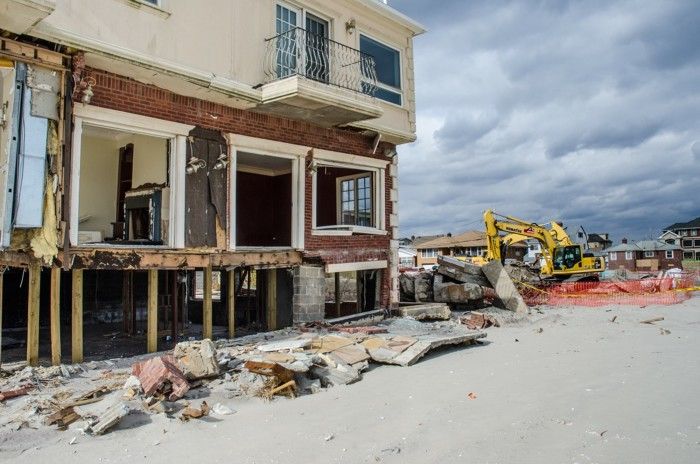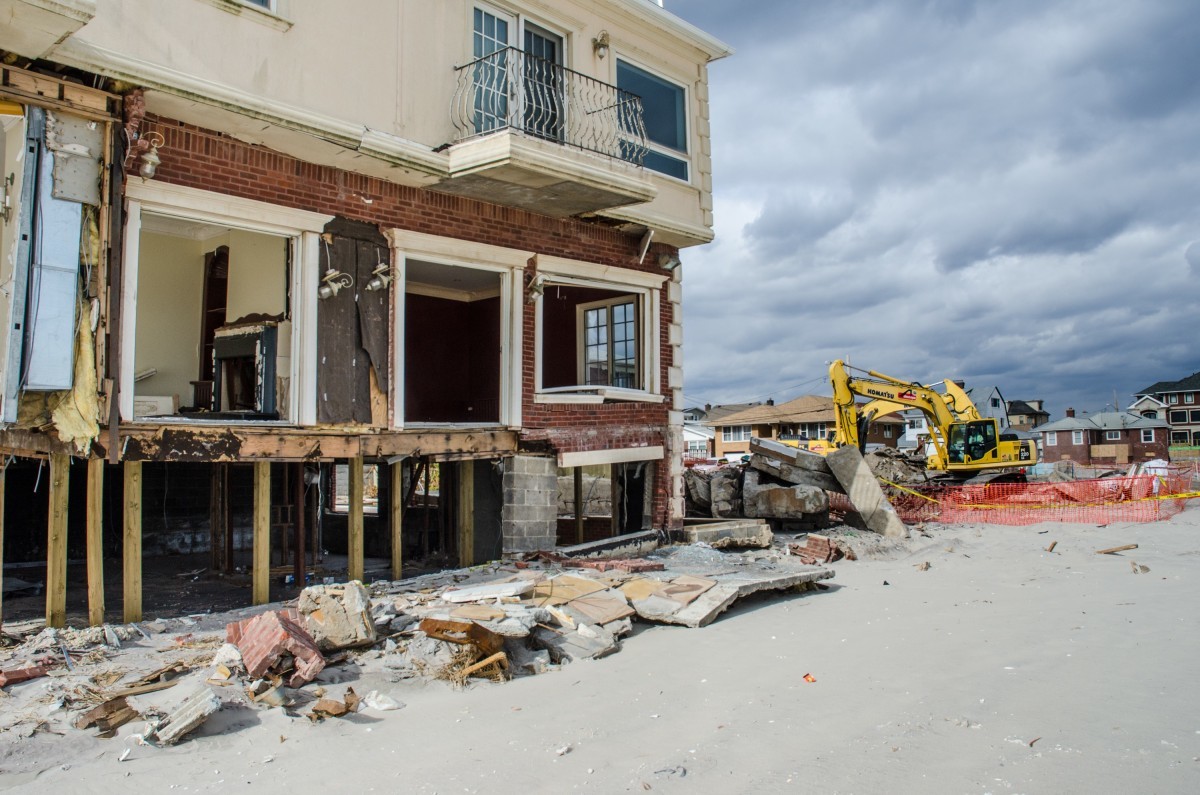NYC Buildings ‘Must Become Stronger’

A New York City task force that studied damage inflicted by last year’s Hurricane Sandy has proposed a number of recommendations to make houses less susceptible to storm damage, concluding that building codes must be updated to cope with the “weather of the future.”
In all, the 200-member task force came up with 33 specific recommendations that would affect single and multifamily houses, commercial buildings, and hospitals.
Here are some of the changes recommended for houses:
- Require that new and replacement doors and windows be wind resistant.
- Anchor houses to their foundations, and strengthen foundations and basements in existing homes.
- Launch a competition to design attractive homes that are raised above anticipated flood lines.
- Recommend that building owners relocate essential mechanical equipment from lower floors that are likely to flood.
- Require that trees located in flood zones be salt tolerant and pruned regularly.
- Require reflective roofing materials that reduce indoor and outdoor temperatures.
The task force’s full report includes very specific information on each of the recommendations, such as the size and placement of fasteners for door and window frames, and the type of caulk for window installations.
There are 71,000 buildings in New York City’s 100-year flood zone. Thousands were damaged or destroyed by the October 2012 storm, which moved up the Eastern Seaboard and eventually came ashore in New Jersey.
Fine Homebuilding Recommended Products
Fine Homebuilding receives a commission for items purchased through links on this site, including Amazon Associates and other affiliate advertising programs.

8067 All-Weather Flashing Tape

Affordable IR Camera

Handy Heat Gun

Thousands of buildings in the greater New York City area were damaged or destroyed by Hurricane Sandy. A task force has recommended a number of steps to make houses and other buildings more storm resistant.























View Comments
Does anyone have stats on just how often this area typically deals with hurricanes, a.k.a. nor'easters? I mean, it's not exactly Florida up there... But then again, now state bureaucrats will have something to do!
"Require that new and replacement doors and windows be wind resistant."
Ok, not particularly hard, but pity those who want any sort of storefront or large systems installed- now you'll likely have to have steel framing, depending on the wind speed the state wants you to deal with.
"Anchor houses to their foundations, and strengthen foundations and basements in existing homes."
Is this referring to much older homes with masonry or stone foundations? B/c this is pretty much always covered with new concrete foundations. Also, are local municipalities now going to have to inspect all existing structures and force residents to reinforce were necessary?
"Launch a competition to design attractive homes that are raised above anticipated flood lines."
So is this going to lead to some state prototype that developers in certain areas have to follow, or is it just another state-sponsored contest that has a solution that no one really adopts?
"Recommend that building owners RELOCATE essential mechanical equipment from lower floors that are likely to flood."
I sure hope this sticks with the 'recommend' label as I doubt anyone really wants to gut their living space layout 'just-in-case' another another storm comes through. It's one thing for new construction, but for existing homes and remodels, this can be an extremely costly and possibly inconvenient proposal.
"Require that trees located in flood zones be salt tolerant and pruned regularly."
Ok, wtf? I know it's overly-regulated New York state, but their going to put what TREES you can have in the code?
"Require reflective roofing materials that reduce indoor and outdoor temperatures."
Well this just sounds attractive... And in what regard does this help a structure withstand storms? Oh, must have to do with the whole AGW b.s. as denoted by their mission statement of needing to, "cope with the 'weather of the future.'"
Honestly, this all sounds like a big sop to home insurance companies. The region has had nor'easters from time immemorial. Homes have had to deal with the occasional one, but plenty have survived just fine if you note all the existing homes this 'task force' wants to effect.
Here in the midwest, the usual course when dealing with 20, 50 or 100-year flood zones is to not build in them, or just deal if you're already there- that's what flood insurance is for. I can think of a number of current massive commercial projects that are being built in such zones, but the developers won't mind the gamble b/c the property should make it's worth back in no-time and again, there's insurance to cover losses.
I tried to skim through that full-length report (btw, that flash interface is bloody hindering awkward to try and find anything specific... PDFs anyone?) and there's stuff there that looks relevant and simple enough, but there are plenty of bones thrown in by the GREEN BUILDING COUNCIL that support their organization's ideas more than the issue at hand.
All-in-all, this strikes me as a state trying to look like it's 'doing something' after what would be a routine weather event (they don't call it the 100-year flood level for nothing) that people should know they'll have to deal with living where they are.